Dubai 2040: Future Developments and Transformations
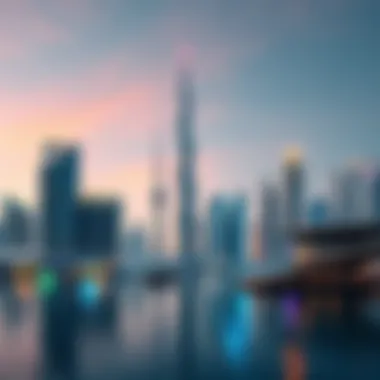
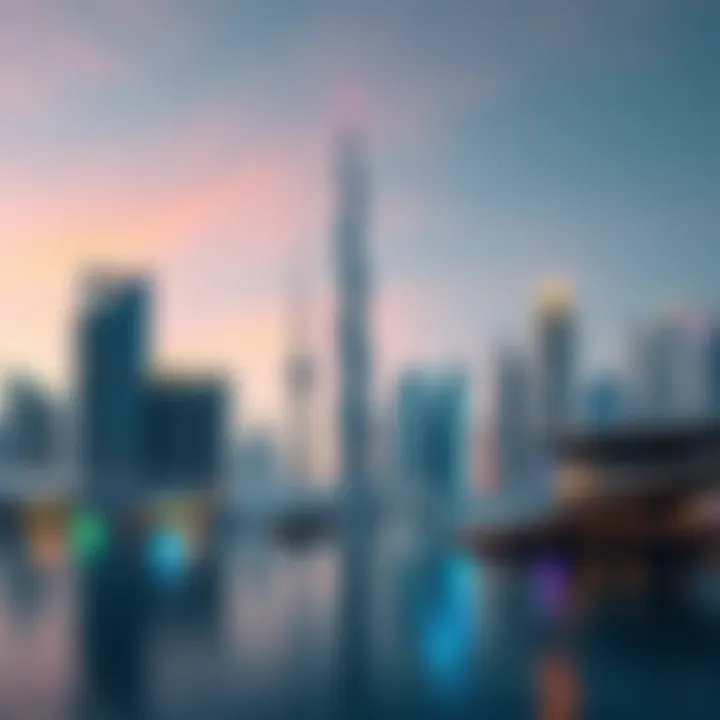
Intro
Dubai stands at the precipice of significant transformation as it gears up for 2040. The emirate is well-known for its visionary pursuits, constantly reinventing itself to stay ahead in a rapidly evolving world. As the economic landscape shifts and technological advancements surge, this explorational journey into Dubai's future focuses on key elements that will shape its urban tapestry. From soaring property values to intricate community designs, the exploration lays out current market dynamics and projected trends, aimed at everyone—investors, potential residents, and even casual enthusiasts drawn to this fascinating destination.
With ambitious initiatives laid out by the Dubai 2040 Urban Master Plan, an intricate blueprint is being crafted for a sprawling urban landscape that champions sustainability while echoing modernity. Understanding these shifts is imperative for anyone pondering investment or residence in this thriving metropolis. This article serves as a comprehensive guide, unfolding the critical aspects of this dynamic evolution.
Preamble to Dubai
The concept of Dubai 2040 stands as a roadmap for one of the fastest-growing cities in the world. With aim to redefine the skyline and enhance the lifestyle of its residents, this vision encapsulates everything from sustainability to technological advancements and cultural avenues. For investors and homeowners alike, understanding this vision is more crucial than ever; it delves into the core of what makes Dubai an attractive spot for people from all walks of life.
In a city renowned for its bold architecture and rapid progress, the plans for 2040 come not just as aspirations but as imperative actions driven by necessity. The challenges and opportunities presented by a diverse population and fluctuating economic conditions highlight the importance of a multi-faceted development strategy. Moreover, this isn't merely about constructing tall buildings but also about creating a harmonious society that accommodates everyone's needs.
Overview of Dubai's Development Journey
Dubai's transformation over the past few decades is nothing short of remarkable. Beginning as a modest fishing village, the emirate has morphed into a global hub for tourism, trade, and innovation. This journey has been characterized by strategic planning and investment in infrastructure, setting a robust framework for continued growth. The government has been pivotal, instituting policies that prioritize economic diversification, drawing in investors and talent from around the globe.
From the inception of the Dubai International Financial Centre to the astonishing Burj Khalifa reaching for the clouds, every step of the way has been marked by a mix of creativity and pragmatism. Each landmark, each initiative reveals the underlying ethos of a city that embraces change while respecting its heritage. Overall, understanding this developmental journey provides key insights into how Dubai positions itself for future endeavors and society-wide impacts.
Key Objectives for Future Growth
The ambitious plans laid out for 2040 focus on several critical objectives aimed at securing Dubai's position on the world stage. Among these goals are:
- Sustainable Urban Development: Aiming for eco-friendly solutions that minimize the environmental footprint, ensuring that future generations enjoy a liveable city.
- Technological Integration: Leveraging advancements like artificial intelligence and smart technologies to enhance city services and citizen engagement — it's all about making life easier and more convenient.
- Economic Diversification: Reducing dependence on oil by investing in tourism, real estate, and renewable energy, ensuring resilience in fluctuating markets.
For potential investors and realtors, deciphering these objectives is key. By aligning interests with Dubai's vision, they not only stand to benefit from immediate opportunities but also contribute to a dynamic and vibrant community. The future of Dubai isn't just an architectural vision; it embodies a commitment to creating an environment conducive to both living and thriving.
"The essence of a great city depends upon its ability to balance growth with inclusivity and sustainability, making it a place for all."
By comprehensively analyzing the past and strategically focusing on the future, Dubai 2040 stands as a beacon of what a visionary and forward-thinking urban environment can achieve.
Urban Planning Strategies
Urban planning strategies are fundamental to shaping the future of Dubai by 2040. As a city that thrives on innovation and ambition, the effective planning of its urban spaces is crucial. It plays a pivotal role in bridging the gap between growth and sustainability. With a burgeoning population and increasing demand for housing and infrastructure, Dubai’s planning approaches must accommodate the needs of its residents while being respectful of environmental considerations.
Smart City Initiatives
Smart city initiatives are gaining traction across the globe, and Dubai is no exception. These initiatives harness technology to optimize city operations and enhance life for residents. The deployment of Internet of Things (IoT) technologies allows for more efficient management of resources like water and energy, leading to reduced waste and better service delivery.
- Integrated Systems: Smart lighting, advanced waste management, and intelligent traffic systems are all part of the grand plan to streamline urban existence. For instance, in Dubai, smart bins that detect fullness and notify collection services help ensure cleanliness without unnecessary stops.
- Real-Time Data: The use of real-time data enhances urban living, allowing city officials to monitor patterns and respond to issues promptly. A striking example is the use of traffic management systems that adjust signal timings based on real-time traffic flow data, reducing congestion.
- Citizen Engagement: Enhancing quality of life also involves engaging the community. Platforms for feedback or apps that encourage public participation in local governance play a key role in the bottom-up planning processes.
"Dubai is not just building a city; it's building a smart ecosystem aligned with 2040's vision."
Sustainable Development Goals
Sustainable development goals (SDGs) are essential in guiding Dubai's quest for a balanced growth model. These goals extend beyond environmental considerations; they also encompass social and economic aspects.
- Environmental Integrity: Dubai aims to enhance its green spaces, targeting a significant increase in parks and waterfront areas. This not only enhances aesthetics but also provides necessary ecological habitats.
- Energy Efficiency: The emirate has set ambitious targets for energy consumption and waste reduction. Solar energy initiatives and a greater reliance on renewable resources are just a part of this strategy, aligning with global trends towards sustainability.
- Social Inclusivity: Ensuring that all demographics benefit from development is crucial. This includes creating affordable housing across varied income groups, thereby promoting a cohesive community.
- Collaboration: Partnerships with local and international organizations bolster these goals. Working with entities such as the United Nations enables knowledge sharing that can enhance local practices surrounding sustainability.
In summary, urban planning strategies in Dubai reflect a dream of not only constructing skyscrapers and malls but also fostering a resilient urban habitat. By intertwining smart city frameworks with sustainable development goals, Dubai is set to cater for its ever-expanding populace while maintaining the natural beauty and diverse culture that the city is renowned for.
Technological Integration
In this age of rapid transformation, technological integration stands as a linchpin in shaping Dubai’s future. As the emirate looks toward 2040, incorporating cutting-edge technology in various sectors becomes vital for enhancing urban life. From real estate to public utilities, technology is not just supplemental; it is the very backbone around which future developments revolve.
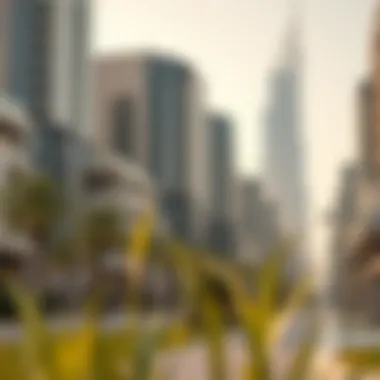
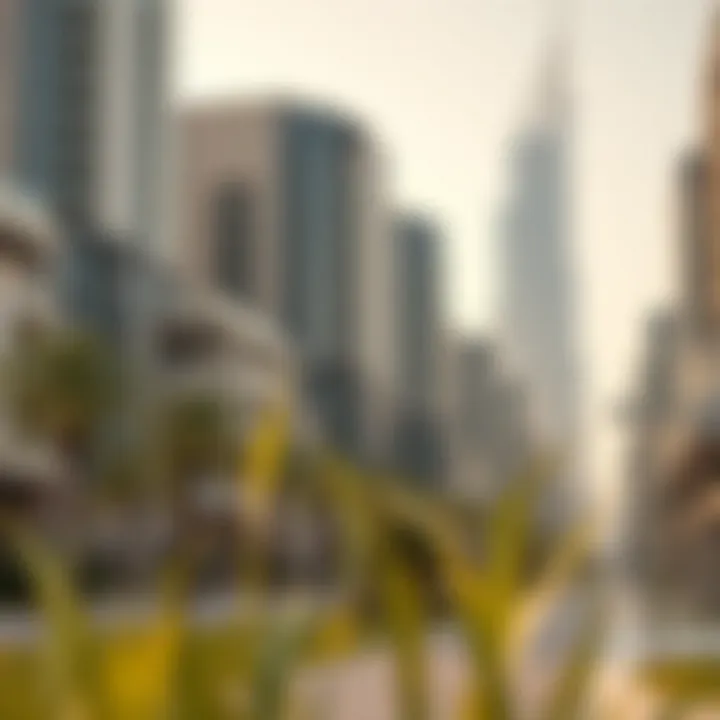
The benefits of embracing new technologies are manifold. They can streamline processes, improve efficiency, and often result in cost savings. Additionally, technology can provide real-time data, offering insights that can guide decision-making, optimize resource allocation, and enhance overall urban living. For investors and realtors in particular, understanding these technological advancements is crucial, as they directly impact property values and investment opportunities.
Emerging Technologies in Urban Infrastructure
As Dubai forges ahead, multiple emerging technologies are set to redefine urban infrastructure. Smart grids are paving the way for energy-efficient systems, integrating renewable resources with existing networks. The potential for energy savings here is significant. Imagine a neighborhood where homes automatically adjust their energy consumption based on real-time demand — that’s the promise of smart grids.
Key examples of these innovations include:
- IoT (Internet of Things): Sensors embedded in buildings that can monitor and control lighting, temperature, and energy use remotely.
- BIM (Building Information Modeling): Enhancing the design and construction process, ultimately leading to smarter building management.
- Drone Technology: Used for surveying and inspecting hard-to-reach infrastructure, minimizing risks and cutting costs.
These technologies facilitate more effective urban management by providing detailed visibility into infrastructure health. If buildings can report their condition in real-time, then repairs can be done proactively, potentially saving cities from costly emergencies.
Impact of Artificial Intelligence
Artificial Intelligence is not just a buzzword; it’s making waves across sectors, and Dubai is no exception. With AI, cities can operate more efficiently and respond dynamically to the needs of residents. For instance, AI-powered traffic systems can predict congestion and suggest alternate routes, which is particularly useful in a bustling metropolis like Dubai.
Furthermore, AI can enhance public services, such as waste management, where smart algorithms can optimize collection routes based on real-time data analysis. This results in faster service and often reduced costs, benefitting local authorities and citizens alike.
Considerations regarding AI implementation include:
- Ethics: Algorithms must be transparent to ensure fairness in their decision-making processes.
- Security: As AI technologies grow, so do concerns regarding data privacy and system vulnerabilities.
"The challenge lies not only in public acceptance but also in ensuring that these technologies enhance quality of life without compromising personal freedoms."
As Dubai gears up for 2040, technological integration promises immense potential. For those invested in real estate or urban development, grasping the nuances of these changes can be a gamechanger. The future is not just bright; it is smart.
Real Estate Landscape in
The real estate landscape in Dubai by 2040 is set to undergo some significant transformations, influenced by a mixture of economic dynamics, technological innovations and social trends. Understanding this evolution is crucial for anyone involved in property investment, development, or even rental markets. As Dubai continues to develop into a futuristic metropolis, the implications for real estate are far-reaching, offering both opportunities and challenges.
First, the ongoing influx of people into the region is going to drive demand for more housing and commercial spaces. As technologies enhance living experiences, potential property investors must recognize the importance of location, amenities, and sustainability features when considering investments. The following sections delve deeper into specific predicted trends along with the rise of smart homes, which are anticipated to significantly influence the market.
Predicted Trends in Property Investment
When we look ahead to 2040, several key trends emerge in property investment within Dubai.
- Sustainable Living: Investors will likely place a premium on properties that are energy-efficient and environmentally friendly. Initiatives like solar-powered buildings or those utilizing recycled materials are expected to be more commonplace.
- Mixed-use Developments: The integration of housing, retail, and recreational spaces into single locations will be in high demand. Buyers desire convenience and community, steering investment toward mixed-use projects that cater to various needs.
- Technologically Advanced Properties: With the continuous rise of smart technology, prospective investors will focus on properties equipped with features like automated home systems, energy monitoring, and advanced security systems.
- Regeneration Areas: Urban areas undergoing redevelopment are likely to attract attention, offering opportunities at more competitive prices.
- Global Investment: As the market evolves, foreign investment will rise, especially from countries eager to tap into Dubai’s economic growth.
Every investor should be aware that adaptation will be key. Staying informed on consumer preferences and the socio-economic environment will position them strategically within this rapidly changing landscape.
Smart Homes and Their Market Influence
The shift towards smart homes in Dubai is not just a trend; it's becoming a major market influencer and is expected to impact property values significantly.
Smart homes are characterized by their ability to improve the quality of life through automation and connectivity. Here are a few factors to consider:
- Increased Comfort and Convenience: Features such as temperature control, remotely operated lighting and smart locks enable homeowners to manage their environment effortlessly. The rising expectation is for homes to not just shelter but to enhance lifestyles.
- Energy Efficiency: Homes with smart energy management systems can lead to substantial long-term savings. As the emphasis on sustainability grows, these homes will be more attractive to both buyers and renters.
- Security Innovations: Enhanced security through smart technology, such as surveillance cameras and smart alarms, will be a significant factor for many potential buyers. Safety and protection are universal concerns, and owning a smart home can alleviate many of these issues.
- Data Insights: Smart homes generate data that can provide insights into energy use and maintenance needs, which can help owners make informed decisions related to property management.
"As smart home technologies become more affordable and widespread, their market influence will only escalate, changing how investors view potential properties."
For further reading and up-to-date information, consider visiting Wikipedia or relevant real estate websites.
Transportation and Mobility
Transportation and mobility play a pivotal role in shaping the urban landscape of Dubai as it heads towards 2040. With rapid urbanization and a surge in population, effective transit systems will be crucial for maintaining connectivity and facilitating economic growth. The importance of streamlined transportation not only enhances the daily lives of residents but also boosts the appeal of Dubai as a hub for international business and tourism. An integrated approach to transportation that combines innovation with environmental sustainability can pave the way for a vibrant economy, while fostering social cohesion amid its ever-evolving setting.
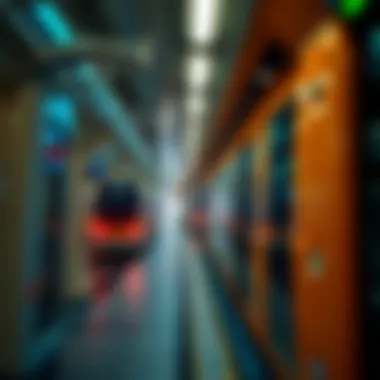

Innovations in Public Transport
Dubai's public transport system is set to undergo significant innovations in the coming years, aimed at making it more efficient, accessible, and environmentally friendly. One of the standout projects is the expansion of the metro system, which has already gained recognition for its cleanliness and punctuality. Plans are in place to introduce more lines, extending reach to newly developed residential and commercial areas.
Moreover, incorporating smart technologies in public transport is a key trend. For instance, mobile applications that provide real-time updates and location tracking will enable riders to plan their journeys much more effectively. This kind of integration increases user satisfaction and promotes the use of public transport. Additionally, electric buses are on the horizon, which would decrease carbon emissions and contribute to a greener city.
- Hyperloop Concept: Another groundbreaking initiative is the exploration of a hyperloop system, which could drastically reduce travel time between Dubai and other emirates.
- Integrated Multi-modal Systems: Seamless connectivity between different transport modes—like trams, buses, and taxis—is essential. City planners are investigating ways to design mechanisms such as park-and-ride facilities to ensure easy transitions for commuters.
"Innovations in public transport will not just improve overall efficiency but also redefine the commuter experience in Dubai," a city transportation authority official emphasized.
Infrastructure Development for Enhanced Mobility
To complement the advancements in public transport, Dubai's infrastructure is also on the up and up. The focus is on creating a cohesive environment that supports diverse modes of transport. Major road networks, cycling lanes, and pedestrian-friendly pathways are elements that planners are keen on developing.
Key Aspects of Infrastructure Development:
- Smart Traffic Management Systems: The deployment of smart traffic lights and congestion monitoring systems aims to optimize the flow of vehicles and lessen delays.
- Dedicated Cycling and Walking Paths: These facilities not only promote a healthier lifestyle but also represent an eco-friendly alternative to car travel.
- Parking Solutions: With urban areas quickly approaching density limits, improving parking infrastructure, such as automated parking systems, is essential to enhance mobility and reduce road congestion.
- Mobility-as-a-Service (MaaS): This concept champions the integration of various transport services into a single accessible platform, allowing users to plan and pay for their journeys effortlessly.
In essence, the evolution of transportation and mobility in Dubai is characterized by a blend of traditional practices enhanced by modern technology. The city is not just laying down tracks and pavements; it is weaving an intricate web of transit possibilities that will serve its citizens and visitors alike, and elevate its status on the global stage.
Cultural and Social Dynamics
Cultural and social dynamics play a pivotal role in shaping the urban narrative of Dubai as it gears up for its vision of 2040. These elements are not just supplementary features; they are central to establishing a resilient, inclusive, and vibrant community that can withstand the pressures of modernization while honoring its rich heritage. For investors, realtors, and homeowners, understanding these dynamics is essential — they influence market trends, community engagement, and overall desirability of living in such a diverse and fast-changing city.
Preserving Heritage Amidst Modernization
As Dubai marches forward, one of its greatest challenges lies in preserving its cultural heritage while embarking on modernization efforts. The city's rapid development has often left little room for its historical roots. However, various initiatives are in place aimed at both celebrating and safeguarding its past.
No longer can the future simply bulldoze the past. An emphasis on preserving landmarks like the Al Fahidi Historical Neighborhood is crucial. Recently, there has been a concerted effort to restore traditional buildings with a focus on maintaining their original architecture. This not only benefits tourism but fosters a sense of identity and community among residents.
Moreover, the integration of cultural districts within new developments helps bridge the gap between old and new. The Dubai Culture and Arts Authority plays a proactive role in this area, creating spaces that host art galleries, museums, and performance venues. These cultural hubs are designed to enhance community engagement and serve as beacons of cultural education.
"In the balance between growth and heritage, lies the soul of a city."
To further buttress these efforts, local festivals celebrating Emirati arts, music, and culinary traditions are increasingly prominent, fostering pride among residents and attracting a global audience eager to experience Dubai's distinct culture. This mixture of history with contemporary flair not only enhances the city’s appeal but also signals to potential investors that Dubai values both progress and preservation.
Evolving Lifestyle Trends
As the landscape of Dubai shifts, so too do the lifestyles of its inhabitants. By 2040, the very concept of urban living is expected to evolve significantly. One noticeable trend is an increasing preference for mixed-use developments, which promise a blend of residential, commercial, and recreational spaces. This approach aligns with the city’s goals of enhancing the quality of life while reducing reliance on personal vehicles.
Moreover, there is a rising consciousness towards health and wellness among residents. This lifestyle shift is prompting developers to incorporate green spaces and wellness facilities within neighborhoods. Rooftop gardens, jogging tracks, and community parks are becoming the norm rather than the exception.
Additionally, the influence of technology on daily life cannot be overlooked. Smart homes equipped with advanced features for energy efficiency and convenience resonate well with a younger demographic that prioritizes environmental considerations alongside comfort.
In fiber to the evolving lifestyle, the obsession with remote work brought forth by recent global events continues to shape preferences. More people are looking for home spaces that double as work areas, necessitating designs that cater to this dual function. This shift presents exciting opportunities for investors who can anticipate and adapt to these changing demands in the real estate market.
To summarize, the cultural and social dynamics of Dubai are intricate and multifaceted. They provide invaluable insights for anyone looking to invest, rent, or reside in this burgeoning metropolis: the balance between honoring the past and embracing the future will define the social landscape of Dubai as we move towards 2040.
Environmental Considerations
In our rapidly changing world, the discourse surrounding environmental considerations in urban development is more crucial than ever, particularly in a dynamic city like Dubai. As we forge ahead into 2040, understanding the intricate balance between growth and sustainability becomes the linchpin for success. This segment sheds light on the vital role environmental strategies play in shaping Dubai's future, exploring both immediate benefits and long-term implications as the city strives to position itself as a leader in innovative urban living.
Sustainability Practices in Real Estate

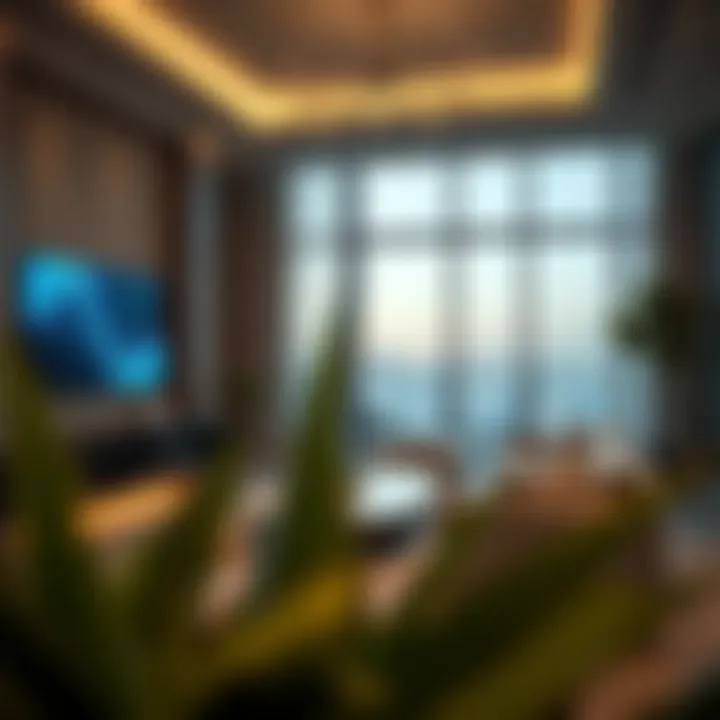
One cannot overlook the significance of sustainability in real estate development, particularly in a region grappling with extreme weather conditions and resource scarcity. For investors and developers interested in the Dubai market, implementing sustainable practices is not merely a trend; it is fast becoming a necessity.
Green building certifications, such as LEED and Estidama, are gaining traction, compelling new projects to prioritize energy efficiency. This shift not only reduces carbon footprints but also cuts operational costs over the long run. For instance, envision residential high-rises equipped with solar panels and rainwater harvesting systems—these features not only enhance livability but also appeal to environmentally-conscious buyers.
Moreover, sustainability goes beyond physical structures. The commitment to sustainable materials can influence the entire lifecycle of a project. Opting for materials that are locally sourced and have low environmental impact can set a new standard in construction practices. A collaborative approach among stakeholders—from architects to policymakers—will ensure that these sustainable initiatives are embedded into the very fabric of Dubai’s real estate paint.
- Benefits of Sustainable Real Estate Practices:
- Enhanced property value over time
- Lower operational costs due to energy efficiency
- Improved quality of life for residents
- Positive brand image for developers focused on corporate responsibility
Long-term Environmental Strategy
Crafting a robust long-term environmental strategy is pivotal for Dubai as it moves towards 2040. At the heart of this strategy is the ambitious Dubai Clean Energy Strategy 2050, which aims to provide 75% of the city's energy from clean sources by 2050. This shifts the narrative from reactive measures to proactive planning that integrates sustainability at all levels.
A key aspect of this strategy is biodiversity conservation, recognizing that urbanization shouldn’t come at the cost of local ecosystems. Initiatives to rehabilitate indigenous flora and improve green spaces within urban settings can not only enhance the quality of air but also promote community engagement with nature. Thinking long-term, creating a network of parks and recreational areas, as envisioned in this strategy, enriches community health and well-being.
"To build a sustainable future, we must think beyond present-day gains and consider the ecological footprint of our ventures."
Furthermore, continuous evaluation of environmental policies will be essential. This involves regular assessments of air quality, waste management efficiency, and water usage—essential metrics to determine the success of ongoing efforts. The integration of smart technologies for monitoring resource consumption and waste generation can pave the way for responsive strategies rather than reactive solutions. As Dubai forges ahead, it must adopt an adaptive framework that aligns with the global sustainability goals, ensuring that resilience is built into its urban identity.
In summary, as Dubai embarks on its journey towards 2040, the focus on environmental considerations will play a primary role in shaping its future. The successful melding of sustainability into real estate and infrastructure projects not only promises economic benefits but also fosters a habitable, vibrant community for generations to come.
Challenges Ahead
The evolution of Dubai into a global powerhouse by 2040 is not without its hurdles. Understanding the challenges that lie ahead is crucial for stakeholders—be it investors seeking returns, developers exploring new projects, or homeowners looking for stability. In this section, we’ll explore two main threads: the influence of economic fluctuations and the pressing issue of social disparities in urban development.
Economic Fluctuations and Their Impact
In the ever-shifting landscape of finance, economic fluctuations can throw a spanner in the works of even the best-laid plans. While Dubai has blossomed as a focal point for tourism and trade, it remains vulnerable to global economic tides. When market turbulence occurs, it can ripple through to property values and investment opportunities.
- Investment Vulnerability: Investors often face the brunt of economic downturns which can lead to fluctuating prices in real estate. For instance, as the global market fluctuates, we might see a sudden dash for cash that could halt ongoing projects or even drive prices down drastically.
- Cost of Living: As the economy wobbles, so do the costs associated with living in this bustling metropolis. An increase in the cost of living might push potential buyers or renters to look elsewhere, potentially impacting future growth.
- Market Adaptation: Real estate developers might need to rethink their strategies; adapting to the market requirements becomes essential for survival. This could mean focusing on creating more affordable housing options, especially during periods of economic slowdowns.
"Economic cycles are inevitable, but preparation and adaptability can turn obstacles into opportunities."
Social Disparities and Urban Development
As Dubai races towards 2040, the city must also grapple with social disparities that could hamper its inclusive growth narrative. The divide between the affluent and the underprivileged can become stark, hindering the dreams of a utopian metropolis.
- Urban Accessibility: New projects should take into account inclusivity in design. The integration of affordable housing in growth areas can help bridge this gap, allowing lower-income residents access to rising amenities.
- Social Infrastructure: As neighborhoods evolve, there’s a pressing need for supporting infrastructure—schools, hospitals, and parks—that caters to all residents. Without attentiveness to these aspects, the divide only widens.
- Community Engagement: Encouraging community engagement in planning and decision-making processes can foster a sense of belonging among the diverse population of Dubai. This input is essential to curb growing social rifts and ensure that urban planning resonates with everyone.
By openly addressing these challenges—economic fluctuations that test the waters of growth and social disparities that threaten inclusivity—Dubai stands a better chance of not just dreaming but achieving its future goals. It's about building resilience, both economically and socially, as the city prepares for 2040.
Closure
As we draw an end to our exploration of Dubai's anticipated evolution by 2040, it becomes clear that this city serves as a beacon of innovation and adaptation. The roadmap set forth for future development not only targets economic growth, but also embraces the equally vital aspects of sustainability and cultural integrity. This multi-faceted approach will not only contribute to the city’s reputation but also significantly influence the lifestyle of its residents and the investment landscape for potential stakeholders.
Final Thoughts on Dubai's Future
The vision for Dubai in 2040 centers around several pivotal elements that are crucial for both the city and its inhabitants. First and foremost is the integration of smart technologies into daily life and urban infrastructure. These advancements are positioned to streamline services, enhance living conditions, and foster a community that thrives on connectivity and efficiency. In short, technology will not just shape buildings but also transform how individuals interact with their surroundings.
Moreover, sustainability practices are taking a front-row seat in the planning stages. By prioritizing eco-friendly developments and materials, Dubai is not only aiming for a prosperous future but also learning from past missteps regarding environmental degradation. This strategy offers both ethical and financial benefits, as sustainable investments often yield long-term returns, making them attractive to prospective investors and developers alike.
Another critical aspect is the focus on cultural heritage. As modernization sweeps through, Dubai is fervently dedicated to preserving its rich history while paving the way for contemporary contributions. This balancing act ensures that while the skyline may evolve with modern glass towers, the essence of Emirati culture remains intact, thereby attracting tourists and residents who value both progress and tradition.
In regards to economic fluctuations and social disparities, the challenges ahead demand a robust framework to manage potential pitfalls. Acknowledging these issues is paramount for city planners and policymakers. As we look to the future, strategies must be rooted in comprehensive analysis to mitigate risks while ensuring equitable development across diverse social strata.
Ultimately, what lies ahead for Dubai is a dynamic blend of ambition, responsibility, and innovation. Investors, realtors, renters, developers, and homeowners should keep a pulse on these developments, as they present not merely opportunities but also a chance to be part of a revolutionary urban renaissance that can alter the global landscape.
"Dubai’s future is not just a vision; it’s a call to all who dare to dream and build a better tomorrow."
For further reading, visit these resources:











